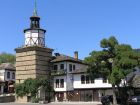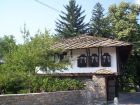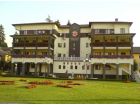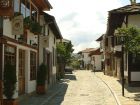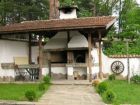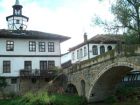The Town of Tryavna
The Town of Tryavna
The village was founded as early as the Thracian Era.
However, the first documents of its existence date back to the 12th century.
During the Turkish yoke locals defended the pass and enjoyed privileges for this reason.
Only Bulgarians lived in the town; the Turks never gained access in it.
During the period of Bulgarian national revival, the town was heavily involved in the development of crafts.
Houses from this period feature their own architectural design.
The ground floors had irregular forms and housed craftsmen and traders.
The upper floors featured wooden bow-windows, the roofs were covered with well arranged rocks.
The town Square, named Capitan Diado Nikola, with the clock tower, dating from 1814, are among the landmarks.
Another tourist attraction is the "kivgireniyat" bridge, built above the river behind the clock tower.
In the Capitan Diado Nikola Square has been built one of the first secular schools in Bulgaria.
Another symbol of Tryavna is the St. Archangel Mihael Church, situated in the town center and built in 1814.
The wood carved iconostasis and the bishop's throne in the church are real masterpieces of the woodcarving in Tryavna.
Next to the school, is the Raikov house with its ethnographic collection, which is the birth place of the first Bulgarian chemist Pencho Nikolov Raikov.
Not far away from it is the museum - house of Angel Kanchev who was Vassil Levski`s compatriot.
One of the most visited museums in Tryavna is the Daskalov house built in the year of 1808.
The museum features the famous wood carved suns.
The house is a museum of woodcarving and icon painting art.
The remarkable ceilings were made after a bet between two of the best masters of wood carving - Dimitar Oshanetsa and Ivan Bochukovetsa.
Тhe two masters hardly worked for six months in the two largest rooms in the house without having a possibility to see each other’s work.





